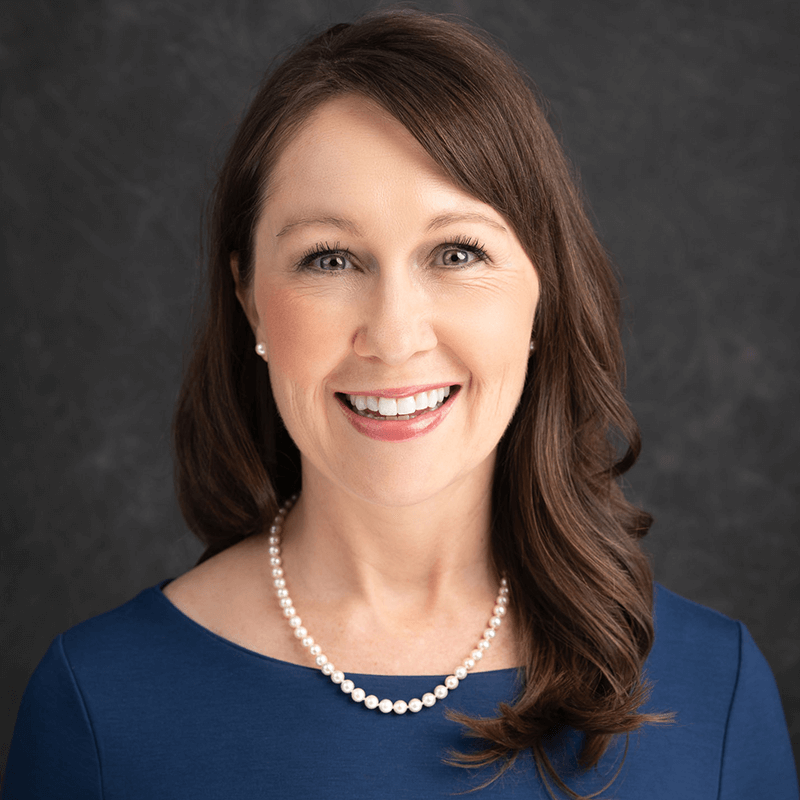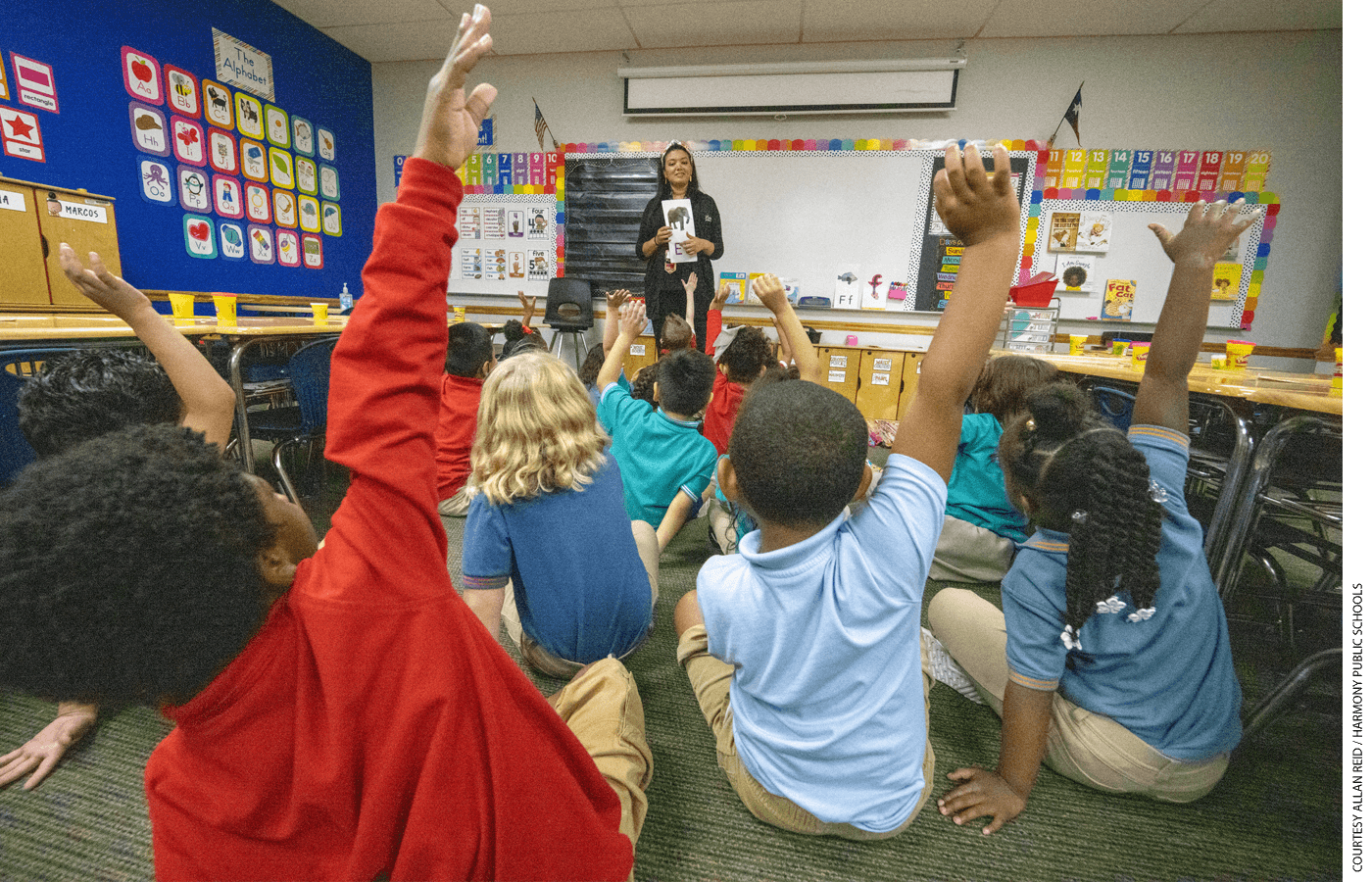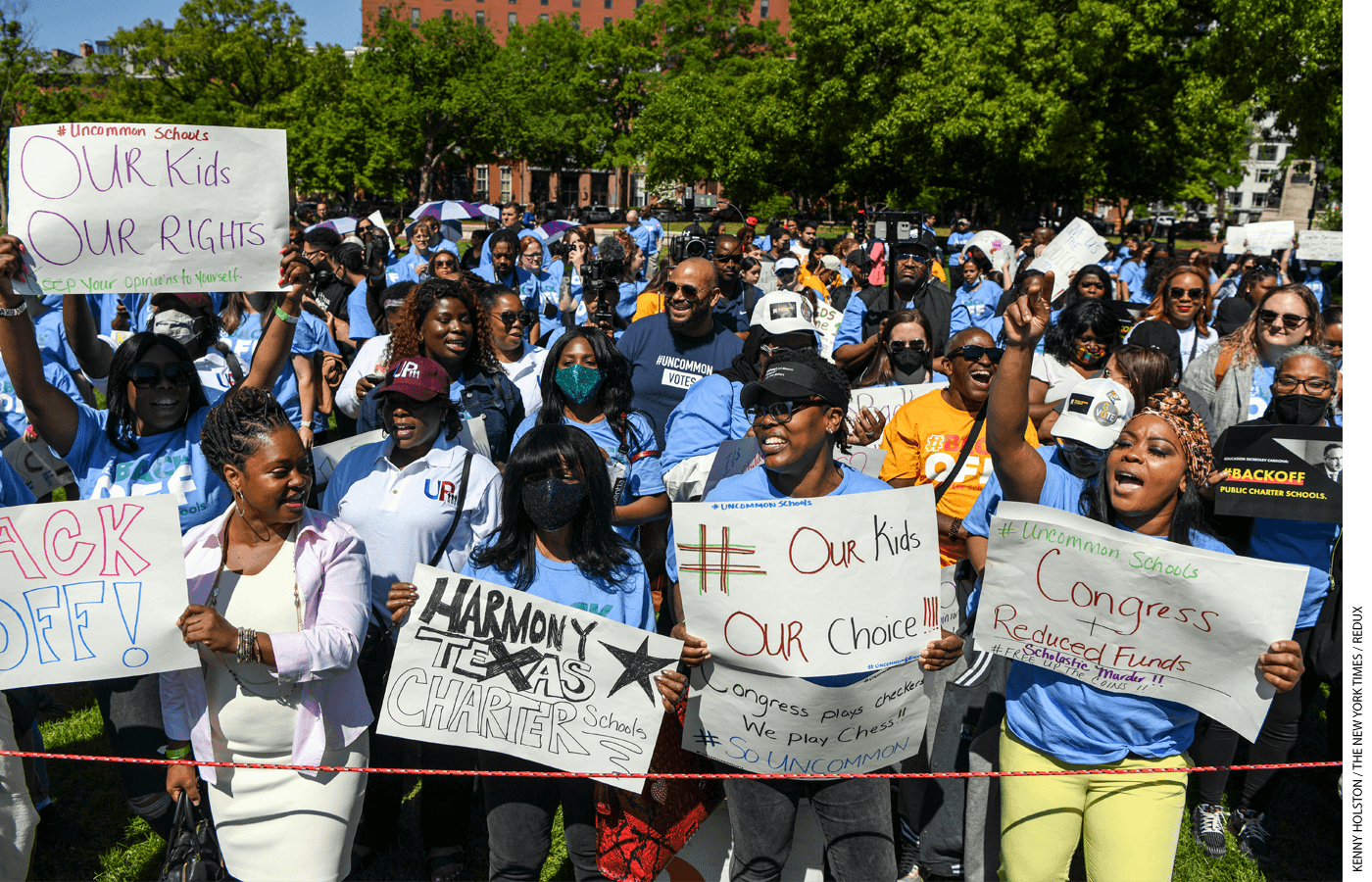 Driving across tracts of new-home development in El Paso, Texas, one can’t miss the signs of charter-school momentum. New charter-school facility projects dot the landscape. Harmony Public Schools, which now operates 62 schools serving more than 40,000 students in Texas, is bullish on the area. Fatih Ay, CEO at Harmony, explains: “All five of Harmony’s current campuses in El Paso are excelling academically, and we have far more parents seeking our services than we can accommodate. So, we are opening our sixth campus this fall, and we see no end in sight for future impact in West Texas.”
Driving across tracts of new-home development in El Paso, Texas, one can’t miss the signs of charter-school momentum. New charter-school facility projects dot the landscape. Harmony Public Schools, which now operates 62 schools serving more than 40,000 students in Texas, is bullish on the area. Fatih Ay, CEO at Harmony, explains: “All five of Harmony’s current campuses in El Paso are excelling academically, and we have far more parents seeking our services than we can accommodate. So, we are opening our sixth campus this fall, and we see no end in sight for future impact in West Texas.”
Eduardo Rodriguez, executive director of CREEED, an El Paso nonprofit supporting improved education in the region, credits the local policy environment, which has been receptive to the growth of high-quality charter schools. “In El Paso, we saw the opportunity to capitalize upon conditions that weren’t found elsewhere in Texas,” he says.
Charter-school enrollment has been growing in Texas for years, but in many localities and even at the state level, charter schools had until recently encountered harsher treatment from policymakers than what advocates have experienced in El Paso. Several municipalities rejected charter-school zoning requests, complicating or stymying charter schools’ expansion plans, and support at the Texas State Board of Education has been unreliable. In June 2022, the board rejected four out of five new charter applications, though many observers thought they all merited approval.
The fact that robust charter-school growth was an exception rather than the norm in Texas vexed Starlee Coleman when she became CEO of the Texas Charter Public Schools Association in 2018. “Here Texas has this reputation for being so charter-school friendly,” she says. “That certainly wasn’t our experience when we first tried to pass our city discrimination bill.” In 2019, the association ran legislation designed to limit cities from treating facility requests from charter schools differently than requests coming from school districts. The bill did not even come close to passing, with 25 Republican legislators who had been considered pro-charter voting against it.

The defeat led Coleman to accelerate the development of the association’s 501(c)(4) political partner, which became heavily involved in both legislative and state board of education races in the 2020 and 2022 election cycles. The impact has been profound. Last June, the Texas legislature approved the association’s city discrimination bill by a wide margin, and a reconstituted Texas State Board of Education approved four out of five new charter-school applications in 2023.
“People told me I was stepping into the job at a moment when charter-school momentum was about to go into decline,” says Coleman. “But with the policy wins that we have had of late and many charters eager to expand? Things are getting very interesting for charter schools in Texas right now.”
Momentum across the Nation
The experience in Texas mirrors an underappreciated story that is emerging across the nation as the country moves beyond the pandemic. In red states such as South Carolina, where more than 30 new charters are set to open in 2023 and 2024, charter schools are recognized as thriving—but significant growth is happening in many blue states as well. New Mexico has seen charter-school enrollment grow by more than 20 percent since 2019. In New Jersey, the administration of Governor Phil Murphy, a Democrat, reversed course and approved a large number of charter-school expansions in February 2023, while Connecticut saw two new charter schools open in fall 2023, the first since 2015.
Enrollment is growing nationally as well. In fall 2021, the National Alliance for Public Charter Schools released a report showing that national charter-school enrollment had increased by more than 370,000 students between 2018–19 and 2020–21, while enrollment in traditional public schools had undergone an unprecedented decline. A follow-up report a year later showed that the charter sector had sustained this rise, while enrollment in the traditional system continued to plummet. By fall 2021, charter schools were serving 7 percent of all public school students nationally, up from 4 percent in fall 2010, according to the National Center for Education Statistics.
This growth across the nation, as in Texas, has been accompanied by pronounced policy progress. Montana, West Virginia, and Kentucky have all passed charter-school laws in recent years, reducing the number of states with no such laws to just four. Revised statutes have catalyzed growth spurts in Wyoming, Iowa, and Arkansas. And the elimination of geographic restrictions in Ohio and Tennessee has led to new charter development in regions that had previously been off limits.
Meanwhile, media outlets report that a mix of red and blue states, including Missouri, Indiana, Ohio, Florida, Wisconsin, Tennessee, Connecticut, Colorado, and Washington, have addressed longstanding funding inequity relative to traditional public schools by boosting annual support to charter schools, in some cases by thousands of dollars per student. In more than a dozen states, advocates have won similar victories on funding for charter-school facilities.
“These are the kinds of foundational policy breakthroughs that we have been seeking for literally decades,” says veteran education reformer Howard Fuller, “and represent a significant step forward that with continued diligence will put new energy behind chartering for many years to come.”
Charter schools have also achieved a dramatic breakthrough in sector-wide academic achievement, another long-sought goal. In 2009, a report on student-achievement growth by the Center for Research on Educational Outcomes at Stanford University (CREDO) showed charter schools lagging behind traditional public schools in both math and reading, with more charter schools underperforming than outperforming nearby district schools. Thereafter, advocates worried that the charter-school movement might never generate the large-scale improvement in student outcomes they envisaged.
But in June 2023, CREDO’s third national report was released, featuring data comparing the performance of two million charter-school students to demographically matched students in traditional public schools. The study found that charter schools sector-wide are now generating better outcomes in both reading and math than nearby district schools and that many more charter schools outperform district schools than underperform them. What’s more, the charter-school movement’s area of strength—performance with Black and Latino students living in poverty—has grown even stronger. For both subgroups relative to their counterparts in traditional public schools, charter schools now generate more than 30 days of additional learning each year in reading and math.
These results came at a time of mixed attitudes toward the role of state-mandated tests in assessing student progress. On the one hand, public backlash persists against standardized tests in general, and many opponents are doubling down on efforts to do away with state-mandated testing altogether. On the other, a profound sense of worry has set in among many policymakers as recent NAEP scores and other measures reveal that decades of national progress in student learning were erased during the pandemic and that historic achievement gaps are widening yet again, underscoring the need for reliable student-performance data over time.
Regardless of which way the national argument breaks on the role of testing, charter schools have validated themselves by demonstrating their capacity to improve outcomes while expanding to serve nearly four million students. What’s more, charters have made this progress while the rest of public education is experiencing a historic implosion in student achievement.
It is leading some prominent figures in the charter school movement to conclude that conditions are more favorable for accelerated charter-school growth and expanded impact than they have been for many years. Says Nina Rees, who recently announced her plans to step down as the CEO of the National Alliance for Public Charter Schools: “As we approach mid-decade, the sense of momentum building within the national charter-school movement is palpable. If we continue making academic and advocacy headway on our current trajectory, people will look back on the 2020s as a period of progress rivalling if not surpassing any decade of impact the charter-school movement has achieved.”

Dire Predictions Overcome
This portrait of charter-school momentum flies in the face of dire predictions from just a few years ago. In November 2016, Massachusetts voters rejected Question 2, a ballot initiative that would have allowed the state to approve additional charter schools. And Donald Trump, who was seen to be more a fan of private-school vouchers than charters, won the presidency. Political priorities among reformers and lawmakers began to shift. Republicans were thought to be putting all their reform eggs in the voucher and Education Savings Account baskets, and many foresaw Democrats abandoning charter schools altogether.
The chorus of naysayers grew louder in 2018 when Gavin Newsom, a long-time supporter of charter schools, promised the California Teachers Association that he would rein in charter growth and was elected governor. Two years later, Joe Biden became president, campaigning on similar commitments to the National Education Association. Many believed that Republicans were about to pivot away from charter-school advocacy toward a political strategy that would use education-policy battles to drive wedges on culture-war issues. It was, in short, a moment when many foresaw that winter was coming for the national charter-school movement.
Over the past five years, charter schools in parts of the country have indeed confronted some wintery circumstances. The most substantive policy damage happened in 2019 in California, where, aided by Newsom, the California Teachers Association and other charter-school adversaries pushed through legislation that gave school districts greater ability to block charter-school growth and threaten the renewal of existing schools. Amid the pandemic, matters worsened when a funding cap was imposed on California’s non-classroom-based charters—schools providing less than 80 percent of their instruction in a traditional classroom setting—denying them the ability to serve more students at a time when tens of thousands of parents wanted to access the kinds of well-established remote and hybrid-learning programs that such charter schools provide.
In spring 2023 the Illinois legislature sunsetted the state’s tax-credit program, which enabled low-income students to attend private schools, and enacted a “union-neutrality bill” designed to make it easier to unionize a charter school. In other places, proposed new charter schools have drawn intense blowback from defenders of the status quo. In Connecticut, the Danbury Charter School and Middletown Capital Prep were approved to open by the state board but were denied funding by the legislature, creating an administrative quagmire that has prevented the Danbury school from opening for six years running.
Meanwhile, charter opponents have won high-profile local elections, including the mayor’s race in Chicago and school-board races in Denver and Los Angeles. Charter schools also lost an important ally when New York Governor Andrew Cuomo resigned. And in red states, charter schools have had to contend with new challenges that may threaten the public’s support for the movement nationwide. While the U.S. Supreme Court refused to review the Peltier v. Charter Day School case coming out of North Carolina, the mere suggestion that female students could be denied protections in the U.S. Constitution and be forced to wear skirts at school outraged many people across the country. Also, the ongoing effort to open the nation’s first religious charter school in Oklahoma is reinforcing the narrative that charter schools are a threat to public education itself, including its nonsectarian foundations.
These challenges and others have had their chilling effect, but relative to the icy doom that many prognosticated, the broader charter-school story that has emerged in the early 2020s has been one of surprisingly robust enrollment growth and policy progress. Aside from the setbacks in California and Illinois, charter schools have incurred no significant policy or budget losses at the state level over the past five years. And even in the most hostile environments, charter enrollment has continued to grow both in absolute terms and as a share of students attending public schools.
In New York City, where a charter-school cap has prevented new schools from opening since 2019, charter enrollment has still grown by 12,000 students, even as traditional public schools have lost more than 66,000. Charter schools in California have made rapid progress in pockets of the state where local political support remains strong. In San Bernardino and Riverside Counties, charter-school enrollment has grown to 64,000 from 43,000 since 2018, and robust expansion continues in Orange County and throughout the Central Valley as well. Statewide, despite the restrictions, California charter schools have still managed to grow to serve 12 percent of public-school students, the highest level on record. With ten new charter schools opening in fall 2023 along with six expansions of grade levels in existing schools, statewide enrollment looks poised to cross the 700,000-student threshold for the first time.
Another strong indicator of charter-school momentum is the commitment to charters that both red-state and blue-state governors have demonstrated across the country. Iowa Governor Kim Reynolds, a Republican, has been willing to endorse challengers and raise money to defeat Republican incumbents in the state legislature who have not supported her charter-school and other school-choice proposals. Arkansas Governor Sarah Huckabee Sanders came to office as a known school-choice supporter, but few predicted the degree of gusto she would bring to revamping the state’s charter-school law in her first year in office. Now 18 new charters are slated to open in 2024, the vast majority of which would not have been permitted under the state’s prior charter law.
Meanwhile, Democratic Governor Jared Polis of Colorado has been a prominent charter-school advocate, helping to secure a wide range of policy wins, including significantly reducing the funding inequity that has bedeviled state-authorized charter schools for decades. Charter-friendly Democrats have also won recent governor’s races in Pennsylvania and Rhode Island. In New York, many in the charter sector lamented Governor Kathy Hochul’s pushing through a proposal to allow just 14 new charter schools to open in New York City. Yet Hochul’s follow-through on a campaign commitment to lift the cap on charters in New York City represents a significant pivot toward support of the sector. Just one election cycle ago, few would have anticipated such a shift on the part of a new Democratic standard-bearer. Her policy stands in stark contrast to former New York City mayor Bill de Blasio proudly proclaiming to “hate” charter schools when he ran for president in 2020.
What’s Going On Here?
Given all of the unexpected progress the nation’s charter schools have made in the past half decade, it raises the question: why? Why, despite the “winter is coming” sentiment that dominated the national conversation late last decade, has the charter-school movement been able to sustain if not increase momentum in so many parts of the country?
The onset of the pandemic played a major part, changing the political landscape in ways that worked out well for charter schools. Andrew Rotherham, co-founder of Bellwether Education Partners and member of the Virginia State Board of Education, observed that the pandemic “laid bare many inequities in the education system that jump-started new school-choice policy proposals, including ones supporting charter schools.” The federal infusion of massive Covid-relief dollars provided new resources from which many states delivered the funding-equity and facilities wins that charter schools have secured in recent years. In some states, the pandemic drew the attention of the public and policymakers to more controversial education matters, including voucher and Education Savings Account proposals, which made charter-school proposals appear moderate in comparison. Says Rotherham, “The general tumult around the pandemic created the base conditions allowing those who retained focus to make policy progress that would never otherwise have been possible.”

The question then became whether the charter-school movement would prove able to summon the focus and the advocacy capacity needed to seize opportunities and contend with threats that emerged in the early 2020s. As it so happened, just as the pandemic was setting in, a wave of new efforts to fortify charter-school advocacy organizations began to show promise.
This new effectiveness was seen at the national level when the National Alliance for Public Charter Schools proved strong enough to hold back proposed changes to the federal Charter Schools Program that would have greatly harmed the movement. Never before had the national charter-school community faced the need to turn around a presidential administration intent on restricting federal charter-school policy. But when the Biden administration proposed new regulations in the spring of 2022, the National Alliance summoned an impressive grassroots turnout in D.C. All told, well over a thousand charter-school parents and other supporters descended on the White House, leading the administration to begin tweeting out its retreat before the festivities in Lafayette Park had even begun. Within days, U.S. senators, governors, and other prominent policymakers from across the political spectrum were penning open letters and op-eds critical of the administration’s overstep. A few months later, the final, defanged regulations were released, and the administration’s walk-back was complete.
It was not, though, a victory that was the Alliance’s alone. Its closest partners were state associations from across the country which themselves had strengthened their advocacy capacity in recent years. After the Massachusetts Question 2 defeat, schools that were members of the Massachusetts Charter Public School Association began contributing significantly increased dues, providing the resources to recruit improved talent and develop long-term advocacy and political infrastructure, including expanded grassroots capacity. Many other state associations recognized the power of that example and followed suit. So, when the National Alliance put out the call to action, a cadre of strengthened state associations was positioned to respond.
Meanwhile, many state associations have recently chosen to forgo providing some operational supports to member schools and to focus instead on strong representative advocacy on their behalf, especially at the state level. Since 2018, at least a dozen state associations have followed the example of Starlee Coleman in Texas and founded or significantly expanded robust partner 501(c)(4) organizations. By better leveraging the collective force of the charter-school sector at the ballot box, several of those organizations have gone on to secure significant policy wins.
Advocacy organizations have also been banding together to form effective coalitions. In New Mexico, a strengthened state association partnered with NewMexicoKidsCAN, Excellent Schools New Mexico, and the local chamber of commerce to succeed in not only holding back a proposed charter-school moratorium in 2019 but also securing significant legislative victories for charter facilities and winning several key school-board races in Albuquerque. Similarly strengthened coalitions have helped secure policy gains for charter schools in Tennessee, Indiana, Missouri, and Ohio. Derrell Bradford, President of 50CAN, an advocacy organization working on charter-school policy across the nation, notes that not long ago, “the charter-school world was often forced to choose between being right or being good. But now that the universe of advocacy organizations has grown and matured into more coherent coalitions that have gotten stronger over time, we’re at a place where we can be both good and right at the same time. And the policy wins reflect that.”
These advocacy successes have been matched by redoubled philanthropic support. Some new investments drew broad media attention, including Michael Bloomberg’s announcement in December 2021 that he would contribute $750 million to foster national charter-school growth. Other contributions were lower key, such as MacKenzie Scott’s more than $300 million in unrestricted grants to charter schools across the country. Meanwhile, several other national funders have either entered or significantly increased their involvement in the charter-school space, including the Ballmer Group, the Valhalla Foundation, and the Margaret and Daniel Loeb Foundation.
Simultaneously, a number of regional funders, including the J. A. and Kathryn Albertson Family Foundation and the Daniels Fund, have steadily increased their support of charter schools in their local communities, now that prior investments have proven successful. Hanna Skandera, CEO of the Daniels Fund, says that her organization’s recently announced intent to add 100,000 students to charter-school and other nontraditional school enrollment in Wyoming, Colorado, New Mexico, and Utah is “generating enthusiasm among funders and families desperate for better alternatives.” It is part of a new wave of philanthropic support from “funders across the country coming together to create improved opportunities for students” through increased support of charter schools.

The Road Ahead
Many daunting challenges remain that could hamper the current momentum. Covid-era learning losses and staff turnover have affected many charter-school organizations as profoundly as other public schools, and staffing challenges will be doubly vexing to those seeking to grow. Overall enrollment declines in K–12 will make new growth initiatives even more controversial, and likely impending funding cuts to public education will threaten the ability to maintain existing programs, never mind take on new ones. Meanwhile, in many environments the resistance to charter schools will further intensify as the defenders of the traditional system grapple with shortcomings that are becoming ever more apparent.
Therein lies perhaps the greatest opportunity before the charter-school movement in the current environment. Many school districts, often those serving students most in need of improved learning opportunity, are overwhelmed by entrenched problems, and they lack the agility they will need to bring forward meaningful solutions. Indeed, there are signs that in the years ahead many school districts will exhibit dysfunction as pronounced as what prevailed at the height of the pandemic. One case in point is the general failure of the traditional system to make progress on Covid-era learning loss. Data are now surfacing that show that many school districts have been unable even to prevent further declines in student achievement.
This regression has sparked a growing sense that an academic crisis is descending across much of K–12 education, and many parents seem desperate to find better options for their kids.
“Our most recent round of polling,” reports Keri Rodrigues, CEO of the National Parents Union, “shows that the percentage of parents believing that profound change in our public education system is needed has grown from 57 percent to 71 percent in the past year. And for the first time ever, concern about public education has grown to become the second most important issue voters are identifying as we head into the 2024 cycle. We have never seen sentiment like this before.”
Perhaps the most striking feature of the charter-school movement over the past half-decade has been its sheer staying power—parents and educators simply carrying on in the face of persistent opposition. Whether it is the applicants to the Texas State Board of Education who secured their charter approvals this year after many years of effort, or the expansion applicants in New Jersey who did the same, or the parents and educators of the Mayacamas Charter School in Napa Valley plowing through California’s newly restrictive authorizing environment to get their school opened this fall, or MESA High School in Brooklyn waiting out the charter-school cap since 2019 to open their next school, or the Danbury Charter School that is preparing to take its case to the Connecticut legislature for the seventh year in a row—charter-school communities are showing what Darryl Cobb, president at the Charter School Growth Fund, calls “an amazing, and frankly moving resiliency,” a toughness “that is leading to a resolve and an urgency amongst school leaders that is as profound as any as I have ever seen. And as long as we supporters of their work can do our part, I believe we’re on the cusp of a new chapter of collective progress as transformational as any that have come before.”
Cobb’s comment expresses the optimism of many charter-school advocates in this new era of momentum—a trend fueled by changed politics, new strength, better advocacy, and simple staying power. Can the movement sustain, and perhaps increase, this momentum? The answer waits to be seen. But the latest chapter of the charter-school story confirms that the movement has become that rare, perhaps unique, facet of education reform that just keeps on keeping on.
Jed Wallace is the founder of CharterFolk, a newsletter and website serving the national charter school community.
This article appeared in the Winter 2024 issue of Education Next. Suggested citation format:
Wallace, J. (2024). The Charter-School Movement Just Keeps on Keepin’ On: Its momentum catalyzed by shifting politics, new strength, better advocacy, and simple staying power. Education Next, 24(1), 8-15.


